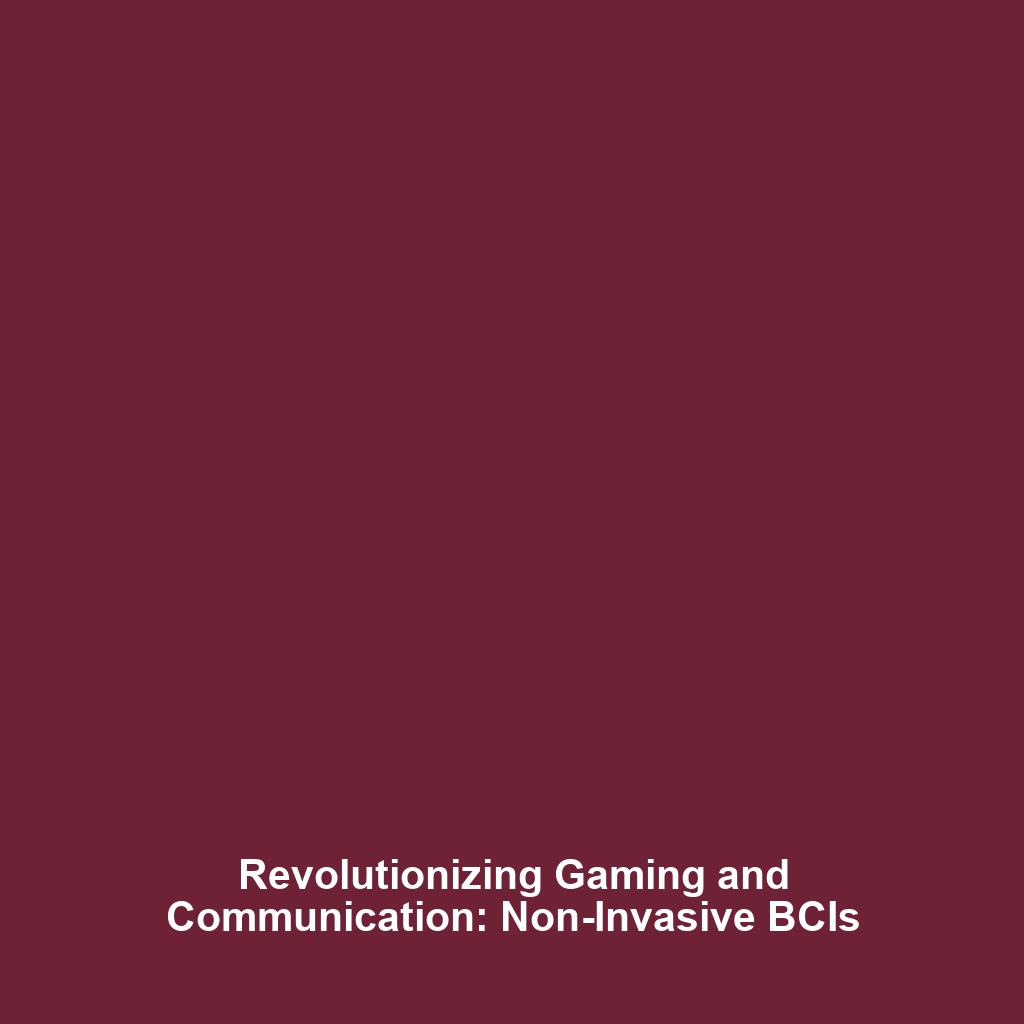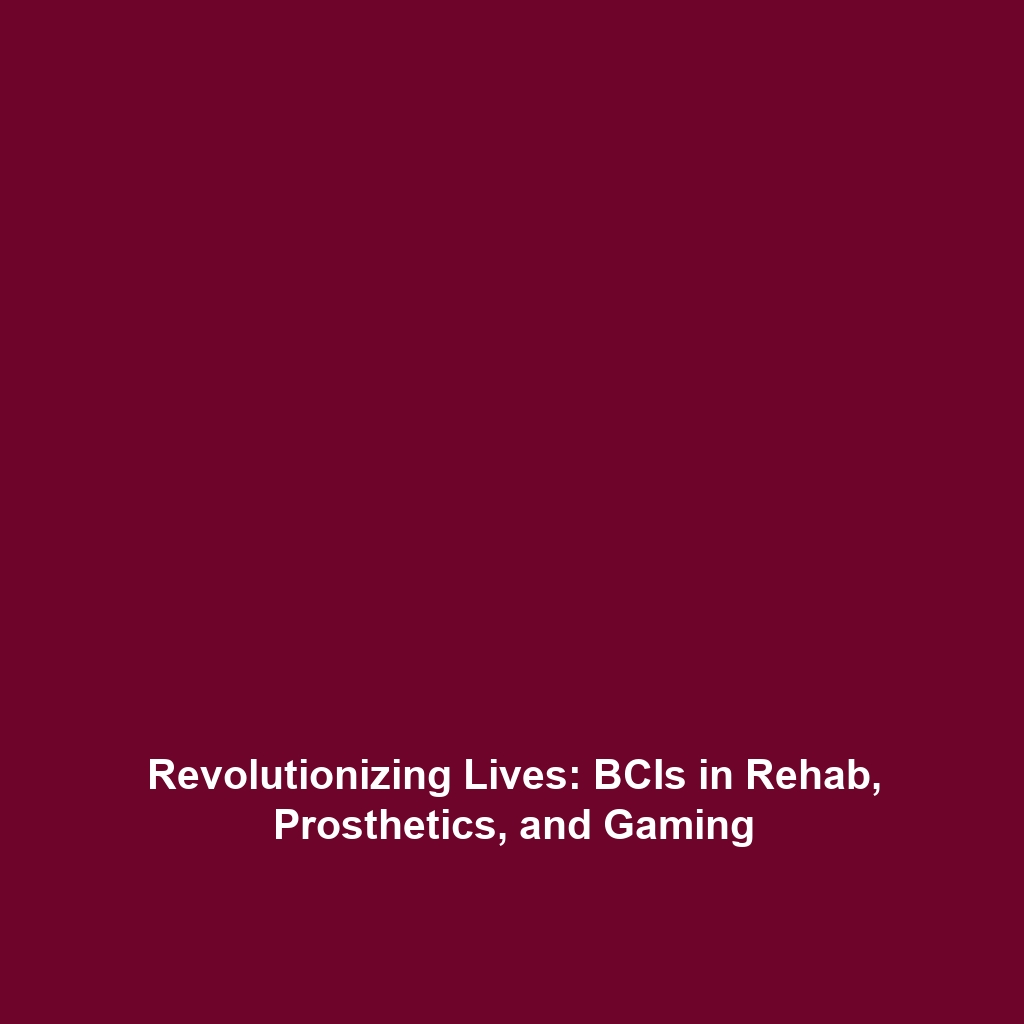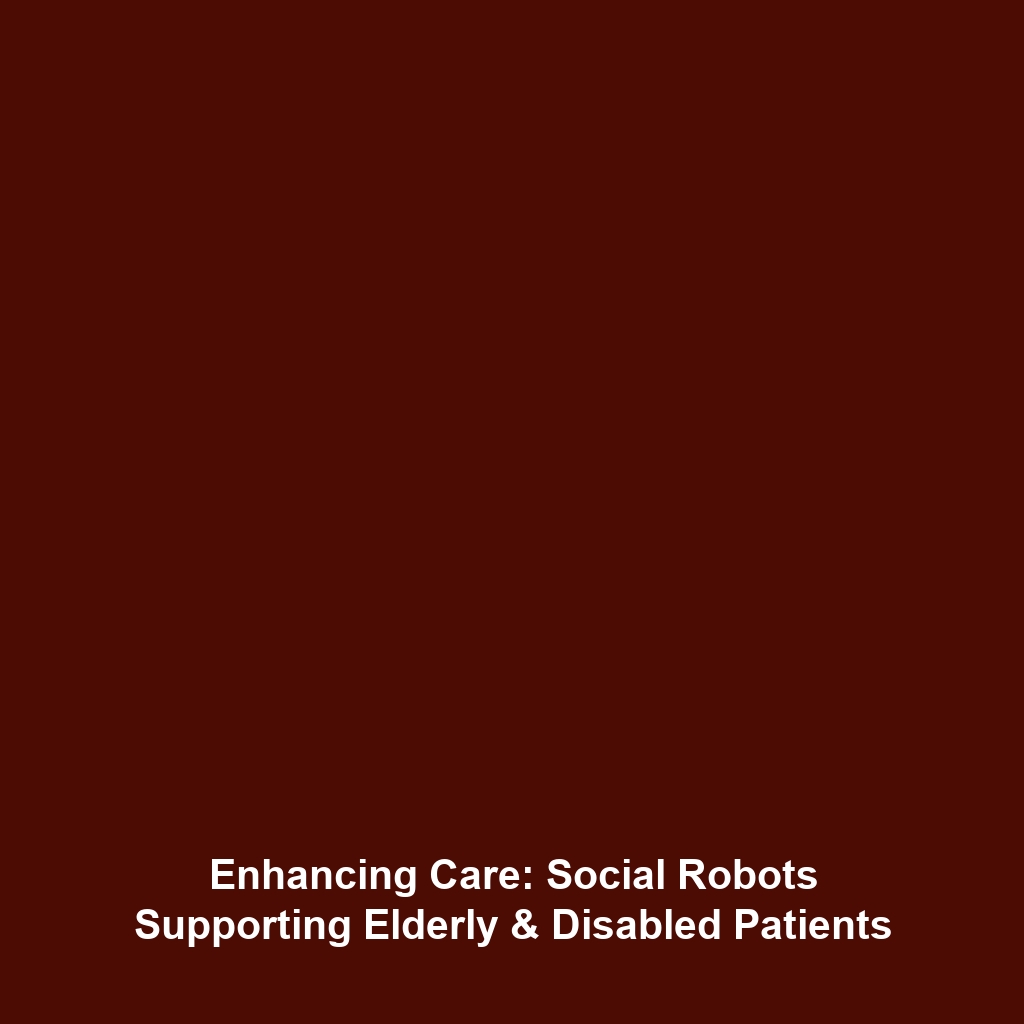<>
Applications of Non-invasive Brain-Computer Interfaces
Introduction
Non-invasive Brain-Computer Interfaces (BCIs) are revolutionizing how individuals interact with technology. These interfaces offer significant opportunities across various fields, especially in gaming, communication tools for individuals with disabilities, and cognitive training. In this article, we will highlight the significance of these applications and how non-invasive BCIs are shaping the future of human-computer interactions. With their growing prevalence, it’s essential to understand the profound impact these technologies have on society.
Key Concepts
Understanding Brain-Computer Interfaces
Brain-Computer Interfaces are systems that enable direct communication between the brain and an external device, bypassing the need for conventional output pathways such as muscles. Non-invasive BCIs, specifically, do not require surgical procedures, making them more accessible and safer for users. They typically utilize electroencephalography (EEG) sensors that detect electrical activity in the brain, translating signals into actionable commands.
Applications in Gaming, Communication, and Cognitive Training
Within the realm of non-invasive BCIs, applications are multifaceted and continue to expand. Users can engage in immersive gaming experiences, utilize communication tools to express themselves, and undergo cognitive training to enhance mental processes.
Applications and Real-World Uses
The impactful applications of non-invasive BCIs are noteworthy, particularly in the following areas:
- Gaming: Many modern video games leverage non-invasive BCI technology to create immersive experiences that respond to players’ neural activity.
- Communication Tools: BCIs provide critical tools for individuals with mobility impairments, allowing them to communicate effectively through thought-driven technologies.
- Cognitive Training: Non-invasive BCIs facilitate programs that enhance cognitive functions such as memory, attention, and learning capabilities.
These applications demonstrate how non-invasive BCIs enhance experiences and improve quality of life for a diverse range of users.
Current Challenges
Despite their potential, several challenges remain in the deployment and study of non-invasive BCIs:
- Limited Signal Accuracy: Non-invasive BCIs often struggle with noise interference, affecting the precision of interpretations.
- User Training: Both users and developers require training to effectively utilize and adapt to BCI technologies.
- Privacy Concerns: The collection of neural data raises ethical questions regarding user privacy and data security.
Addressing these challenges is crucial for the advancement and broader acceptance of non-invasive BCIs.
Future Research and Innovations
The future of non-invasive BCIs is bright, with ongoing research focusing on:
- Enhanced Signal Processing: Development of advanced algorithms to improve signal interpretation and accuracy.
- Wearable BCIs: Innovations in wearable devices to provide greater accessibility and comfort for users.
- Integration with AI: Collaborations between BCI research and artificial intelligence to facilitate more intuitive human-computer interactions.
These emerging technologies promise to evolve the landscape of brain-computer interactions and expand their applications in various fields.
Conclusion
In summary, non-invasive BCIs hold significant promise in areas such as gaming, communication, and cognitive training. These technologies are not just tools; they represent a fundamental shift in how humans can interact with machines. Continued research and innovation will further authenticate their relevance in the growing field of Brain-Computer Interfaces. For further exploration of BCIs and their applications, consider reading more about cognitive training technologies and accessible communication tools.



